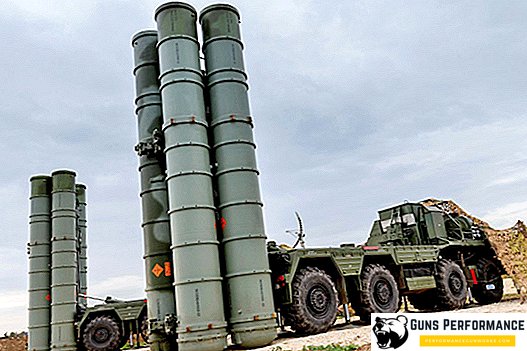The Middle East has always been the cornerstone of international politics. The political interests of the sovereign rulers of the Arab world were closely intertwined in this region. Before the advent of Islam, the Arabian Peninsula was considered the edge of the earth, being on the periphery of international politics. Major political events unfolded far beyond the borders of Arabia. Only Muslim shrines - Mecca and Medina, located in the southwestern part of the Arabian Peninsula, made these barren and deserted lands a center of attraction for Muslims all over the world.
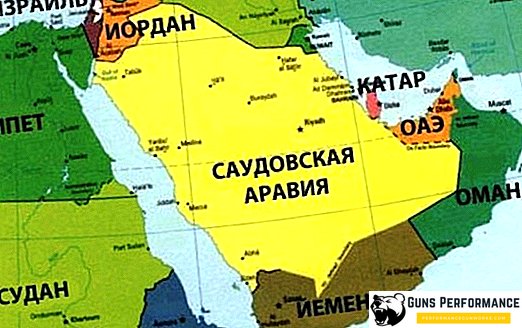
Politically and economically, Arabia for 1,000 years remained a blank spot on the international political map of the world. It is now located here the richest countries in the world, the Kingdom of Saudi Arabia, the sheikhs of Kuwait, the Sultanate of Oman and the United Arab Emirates. And 100 years ago, these vast territories were of no political or economic interest to the rest of the world. The status of the king of Saudi Arabia today is the status of the most authoritarian and richest political figure, and the kingdom itself is one of the richest in the world.
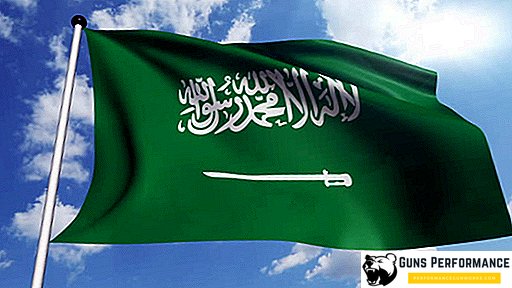
Kingdom of Saudi Arabia: the current status of the state
Saudi Arabia is the largest country in the Arab East, with an area of 2,149,690 square meters. kilometers Most of the country’s territory is occupied by the Rub al-Khali desert, which makes the region unsuitable for living. The country's population is concentrated in the coastal areas in the north-east and south-west of the country. Here are the main political and administrative centers of the state. However, the main wealth of the country is the huge reserves of oil, in terms of which the Saudi kingdom ranks second in the world, second only to Venezuela.
The heyday of the state, which was a semi-feudal principality less than 100 years ago, is associated with “black gold”. Thanks to oil, today the Kingdom of Saudi Arabia has weight in the international arena. Huge oil reserves became the foundation on which the colossal state of the ruling dynasty was built. Oil has become a convenient instrument of international politics for the kings of Saudi Arabia.
However, it is not oil that is the main cause of the stable political and social and social position of the largest country in the Arab world. Stability and successful development of the state became possible only thanks to the wise and competent policy of the ruling political elite. The Saudis' dynasty managed not only to achieve the unification of the scattered lands of the Arabian Peninsula, but also survived in political and economic confrontation with international capital. Since the proclamation of the establishment of the Kingdom of Saudi Arabia in 1932, the country is entirely under the control of the local rulers. The fall of Ottoman rule marked the beginning of an independent path of development of the state. The Kingdom of Saudites was not a single day in the status of a colony, dominion or protectorate. The opening in the country in the 30s of huge oil reserves opened up new opportunities for the ruling regime, which the local power elite effectively used.
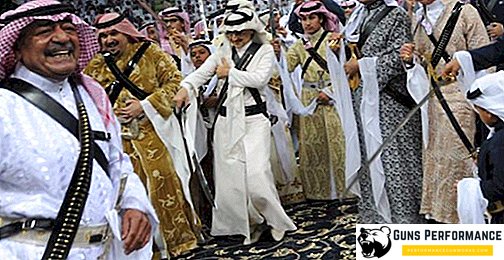
The history of the kingdom began with the difficult process of unification, which covered the vast territories of the Arabian Peninsula, affecting numerous tribes and small states of the region. The unification took place around the dynasty of the house of Al Saud, whose members personally took part in the events taking place. The result of long and bloody internecine wars was the formation in 1932 of the Kingdom of Saudi Arabia. The head of a huge state became the head of the house of Saudis, who became a hereditary, ruling dynasty.
Today, Saudi Arabia is a public entity that lives under the laws of the Basic Nizam, adopted in 1992. In accordance with the General Law of Saudi Arabia is an absolute monarchy, which is based on the state religion of the Sunni Islam. The ruling elite of the country are representatives of the house of the Saudis, grandchildren and great-grandchildren of the king - the founder of the state Abdel Aziz. The king enjoys unquestioned power and authority, which is limited only by Sharia law.
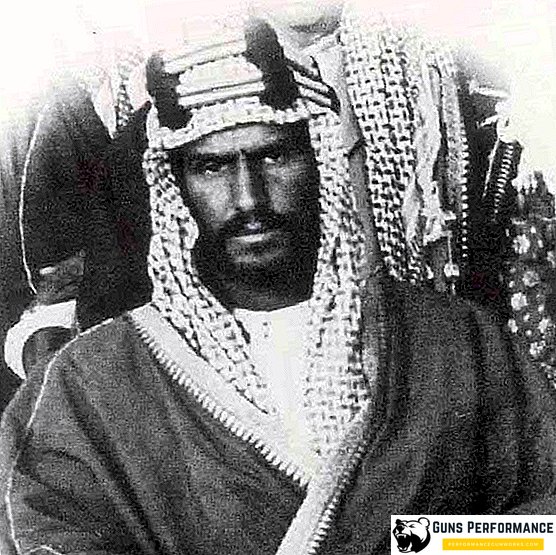
Powers of the King of Saudi Arabia
Today, the king of the country is the son of the first king Salman ibn Abdulaziz Al Saud. The king personally takes part in government. Royal decrees have the force of state laws, but they are enacted only after coordination and consultation with a group of religious leaders of the country. Often, the decrees and orders of the King of Saudi Arabia are the subject of discussion by important civilians representing the civil and public elite of the kingdom.
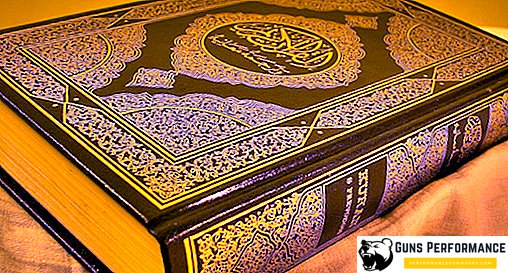
The royal throne belongs to the current monarch indefinitely as long as the head of state can physically perform his functions and duties. The throne is inherited by the brother of the ruling monarch, whose candidacy is approved by the "Council of Devotion", acting at court. This legitimate and deliberative body began its work quite recently, since 2006. In the absence of fraternal bonds, the heir may be a man older in the next generation. The main responsibility of the monarch - to appoint a successor. Earlier, the monarch himself appointed the heir, acting at his own risk and guided by the laws of Sharia and the Basic Nizam. The transfer of royal power goes only through the male line. The female part of the House of Saudites does not take part in the order of succession to the throne.
The authoritarian rule of the Saudi king relies on modern government institutions. All the fullness of the executive power in the state is in the hands of the Council of Ministers, whose composition is personally determined by the ruling monarch. All ministerial posts, including the post of prime minister, are occupied by representatives of the ruling dynasty. Executive power is completely under the control of the king. All decisions, orders of the government of the Kingdom of Saudi Arabia must be coordinated with the monarch and his entourage. Domestic policies pursued by the government of the country, is a complete reflection of the will of the king. The country's foreign policy is also a program developed by the monarch in close contact with the approximate persons.

Family interests are the interests of the ruling elite. However, unlike other authoritarian political regimes, the representatives of the Saudi dynasty represent the Saudi king as one with the people of Saudi Arabia. This allows you to build a competent and balanced domestic policy, while maintaining a balance in civil society. Legislative authority in the kingdom, which is represented by the Consultative Assembly, is similarly structured. This body is a kind of parliament, consists of 150 members appointed directly by the king, there are no political blocs, no parties, no social and civil movements. Political culture is completely absent, not only in government bodies, but also in the country as a whole. The term of office of the Consultative Assembly is four years. Until 2011, only representatives of the stronger sex were appointed to the country's legislative body. Today, almost 1/5 of the members of the Consultative Assembly are women.
The judicial branch in the country is fully controlled by the monarch and built on Sharia law. The king has the right to appoint judges whose candidacies are represented by the Supreme Judicial Council. In turn, the Judicial Council itself depends on the will of the acting king. All 12 members of the Supreme Judicial Council are appointed by the king from among high and authoritative spiritual and religious dignitaries. Despite this selective approach, the judiciary in Saudi Arabia is considered independent, but the king is the highest court in the state. The monarch has the exclusive right to intervene in the course of the consideration of controversial cases, to declare amnesty within his powers.
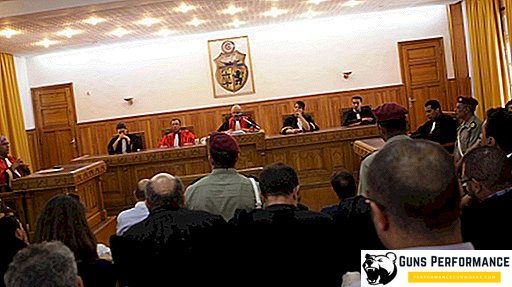
In 2005, King Abdullah attempted to reform the country's judicial legislation and judicial system. However, the action of the relevant royal decree ran into the strongest opposition from the judiciary. The reason for the opposition to judicial reform was the conservative policy of the judges, traditionally accustomed to rely on the norms of Sharia in their work. The Western judicial system, which should have started to work in the country, in their opinion, does not comply with the basic Law and cannot be used in the present conditions. Likewise, today they are doing with the reform of the government of the country. The king’s desire to make the monarchy enlightened comes up against the foundations of Islam, which gives the ruling dynasty of Saud the sole and legitimate right to the royal throne.
Historical excursion into the history of the royal power of Saudi Arabia
At the root of the creation of the Saudi royal dynasty was the ruler of the city of Ad-Diyriya Muhammad ibn Saud, who first had a hand in creating a powerful and united state on the territory of central Arabia. In accordance with the original sources, the birth of the now ruling dynasty in Saudi Arabia falls on the middle of the XVIII century. However, at that time the young state did not have the strength to resist the power of the Ottoman Empire. After Turkish troops invaded the country in 1817, the first Saudi state ceased to exist. The Arabian Peninsula, with its main Muslim shrines, became one of the provinces of the vast Ottoman Empire.

The period of Turkish domination was short. Just seven years after the beginning of the occupation, in 1824 a new state of Saudi was founded in the small town of Riyadh. The second attempt to create a new state formation was no better than the previous one. After 67 years, the Saudis, under pressure from their long-time enemies, were forced to leave the country, hiding in neighboring Kuwait. Only in the 20th century, the attempt to create a Saudi state was crowned with success, but this was preceded by a long and bloody struggle for power and territory.
The young Abdul Aziz Saud managed in 1902 to regain control of Riyadh by force. After a series of successful armed clashes with Turkish troops who arrived in the region to help Saudi rivals, the Saudis not only managed to retain their influence in the capital, but also seized in 1912 the entire Sultanate of Nedzh. From this point on, centripetal processes were launched, aimed at uniting all the lands of Arabia under the rule of the Saudi dynasty. By entering into an alliance with the British, Abdul Aziz inflicts a final defeat on his political opponents. After the defeat of the Ottoman Empire in World War I, this vast region came under British political control. Instead of the former Turkish province in the Arabian Peninsula, five independent states emerged.

Over the next five years there was a stubborn struggle for the south-western part of the peninsula, in which Mecca and Medina were located. The result of the bloody struggle was the seizure in 1925 by the troops of Abdul Aziz, the main Muslim shrine of Mecca. Having received political recognition from the British, Abdul continued the struggle to unite the rest of the Arabian Peninsula under his patronage. In 1932, a new united state emerged on the political map - the united kingdom of Nejd and Hejaz, which received a new name Saudi Arabia. The only political figure capable of heading the new state was Abdul Aziz Saud, who assumed the royal title. From now on, the Saud clan becomes the ruling dynasty, on which the whole system of state power of the kingdom rests.
All kings of saudi arabia
As already mentioned, the founder of the state of Saudi Arabia is considered to be the representative of the Saudi family - Abdul Aziz ibn Saud. He is also the first monarch to occupy the royal throne in Riyadh. All subsequent Saudi kings are his sons. In accordance with the Basic Nizam, only direct descendants of a crowned person — sons or grandchildren — can inherit royal power in the country.
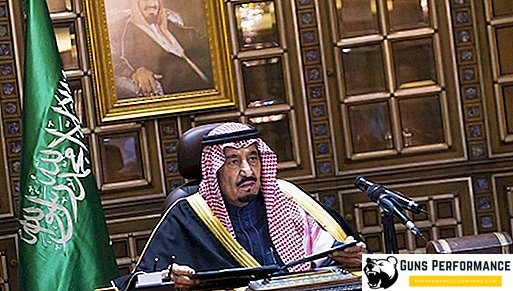
The exact order of inheritance is missing. The official royal title worn by monarchs is the king of Saudi Arabia. Since 1986, another title has been added to the royal title - the Guardian of the Two Shrines. The chronology of the stay on the throne of the kings of Saudi Arabia and the years of the royal monarchs is as follows:
- the first king of United Saudi Arabia - Abdul Aziz (reign 1932-1953);
- in 1953, the royal prince took the crown prince Saud - the second son of the first king Abdul Aziz, overthrown in 1964;
- the second king of Saudi Arabia became the second son of the founder of the state Faisal (ruling years 1964-1975), killed by his own nephew on March 25, 1975;
- his place in 1975 was taken by Khalid - a representative of the clan Al Dzhilyuvi - side branch of the ruling dynasty of Al Saud - died on June 13, 1982;
- the fifth king of Saudi Arabia, Fahd, who led the kingdom from June 1982 to August 2005;
- the sixth monarch was in August 2005, Abdullah, died in January 2018 at the age of 90 years;
- Salman, the head of the Saud clan and the son of the first king Abdul Aziz, is now king.
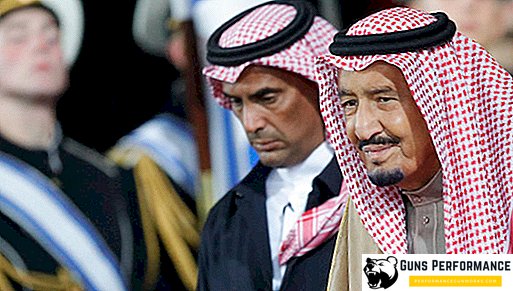
From the long list it is clear that only one monarch, Khalid, was indirectly related to the ruling dynasty. All other persons occupying the throne in Riyadh, are direct descendants of the founder of the state. We must pay tribute to the first king of Saudi Arabia in his desire to make the ruling dynasty strong and stable. After the monarch left 37 sons, each of whom had the legal right to occupy a high post.
The second king of Saud was for the kingdom one of the most important people. The years of his rule are associated with the emergence in Saudi Arabia of a stable system of state power and administration. When he appeared in the kingdom slender state apparatus. Despite the fact that ministerial positions were held by relatives and persons close to the monarch, the result was not long in coming. Its reforms in the sphere of finance and economy allowed the state to become one of the locomotives of the Arab world. During the reign of Saud, the monarchy finally acquired the contours of a totalitarian regime. For criticism of the king introduced criminal liability. However, among the negatives, the royal decree of 1962, canceling the institution of slavery in the country, stands out as a bright spot.
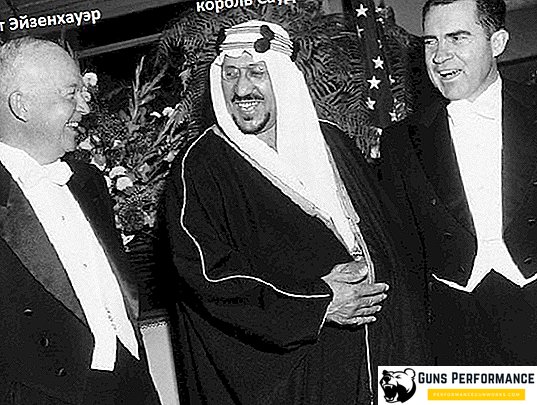
The fate of this monarch, like his successor, King Faisal, is remarkable in the history of the royal house of the Saudis. These two brothers - the sons of the founder of the dynasty - ceased to be kings against their will. The first after 11 years of rule was overthrown from the throne by his brothers, dissatisfied with the style and methods of his rule. Heir to the law became Faisal, who took the place of Saud on the royal throne. However, the third king of Saudi Arabia also did not have long to hold a high position. Fate gave him all the same 11 years. He was killed during a solemn ceremony, and the monarch's nephew became the killer.
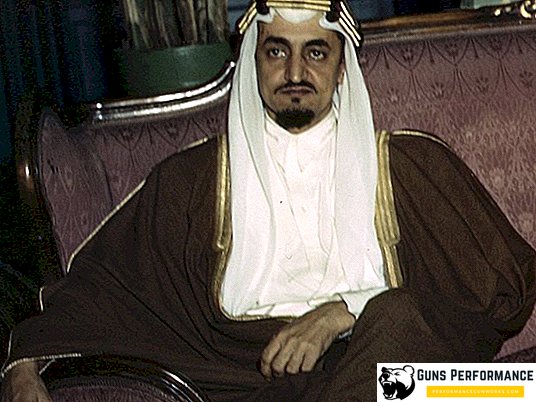
The Faisal board was marked by the rapid growth of oil production. According to this indicator, the country in the mid 60s becomes the world leader. Petrodollars flowed into the country a huge river, allowing the royal government and the state apparatus to set more ambitious goals and solve complex domestic and foreign policy tasks. Under King Faisal, the oil-producing industry comes under state control. A modern urban and transport infrastructure is being created in the country. From the semi-feudal kingdom, the kingdom of Saudi Arabia goes into the category of economically developed states. King Faisal sought to make the Saudi kingdom the leader of the Arab East.
However, the policy of ambivalent standards pursued by the royal house of the Saudis, led by Faisal, did not give significant dividends. During the six-day war, Saudi Arabia came out in a united front with other Arab countries, harshly criticizing Israel and the Western countries that supported the Israeli aggression. During this period, there is a cooling off in relations between Saudi Arabia and the United States.
The penultimate monarch Abdullah ibn Abdul-Aziz became the brightest person in the new history of the kingdom. With his submission in the country, the cult of worship of the royal blood has been abolished. Abdullah forbade his numerous relatives, who number more than 7 thousand, to use the state treasury for personal purposes. Впервые за все время существования ислама лидер исламского государства встретился с папой римским. Эта встреча состоялась в ноябре 2007 года в Ватикане. При короле Абдалле страна получила развернутую программу развития социальной сферы, результаты которой не замедлили сказаться на улучшении сферы образования и здравоохранения.
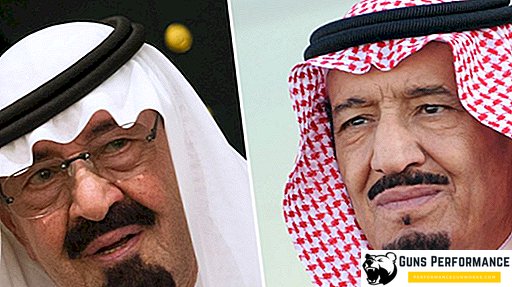
Нынешний король Салман ибн Абдул-Азиз Аль Сауд взошел на королевский трон 23 января 2018 года. До вступления на престол новый монарх был губернатором столичного округа и занимал пост министра обороны в правительстве своего брата - короля Абдаллы. Правление последнего, ныне здравствующего короля Саудовской Аравии выглядит противоречиво. Несмотря на значительные преобразования и реформы в социальной сфере и в экономике, страна погружается в эпоху тоталитаризма. В период 2014-1016 годы по стране прокатилась волна смертных казней, которая значительно подорвала внешнеполитический облик правящего режима.
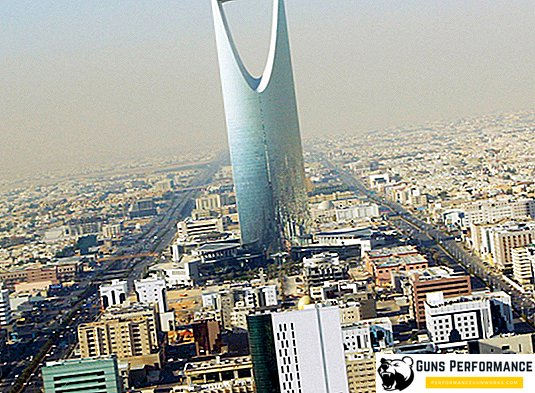
Резиденция правящего монарха Саудовской Аравии - королевский дворец, ультрасовременное высотное здание, возвышающееся на сотни метров над столицей страны. Здесь находятся не только покои короля и наследных принцев, в большинстве зданий располагаются правительственные службы, аппараты министерств. Здесь же проводятся торжественные приемы и заседания высших органов государственной власти.






